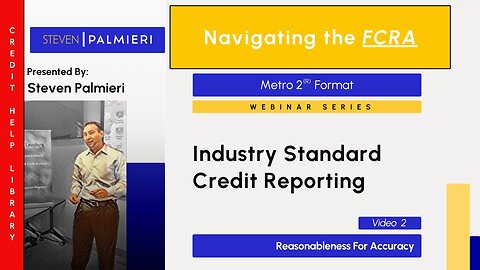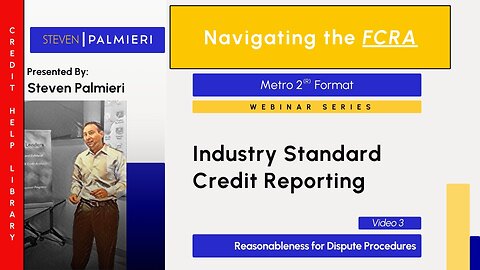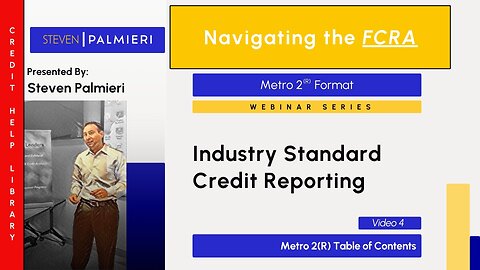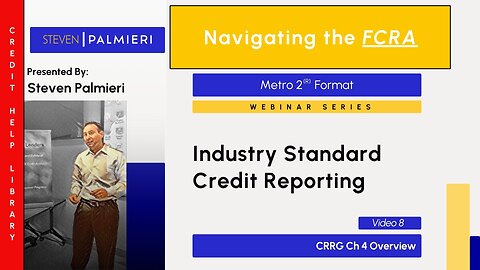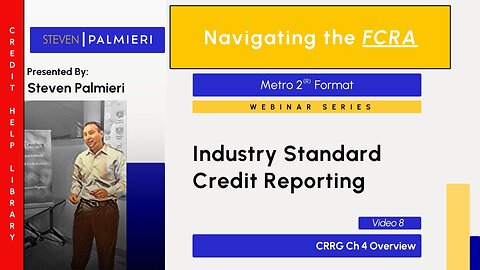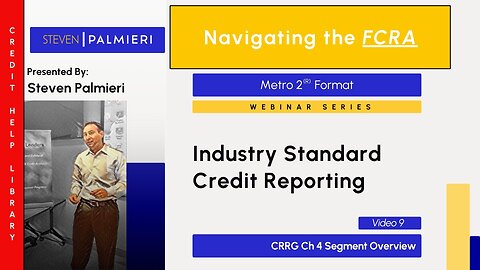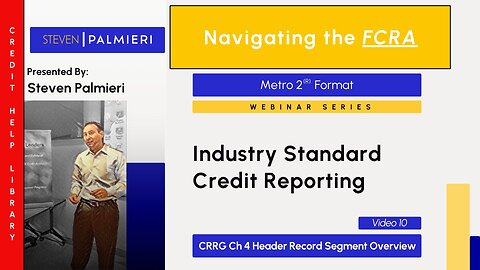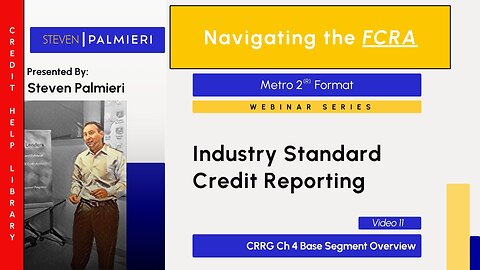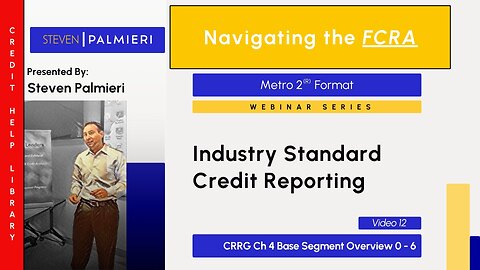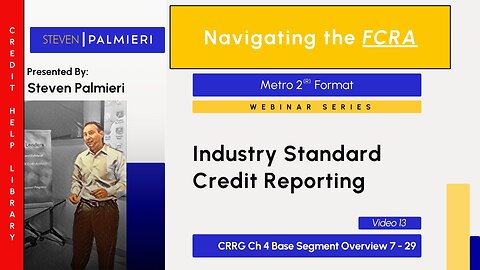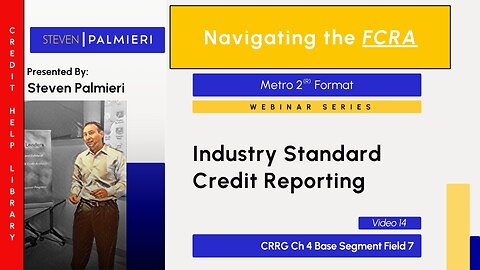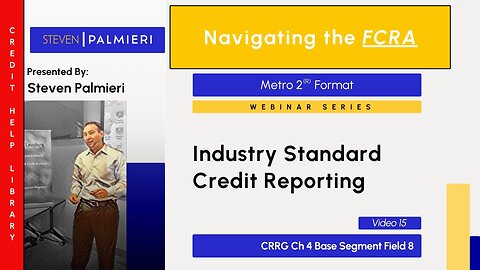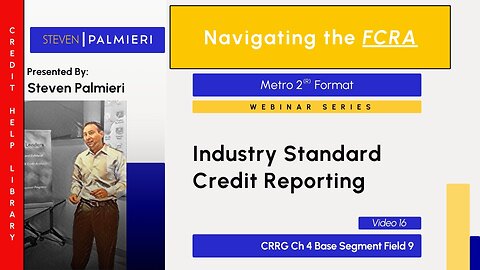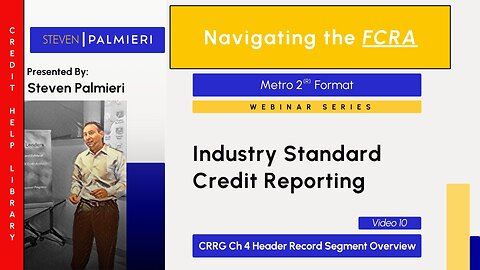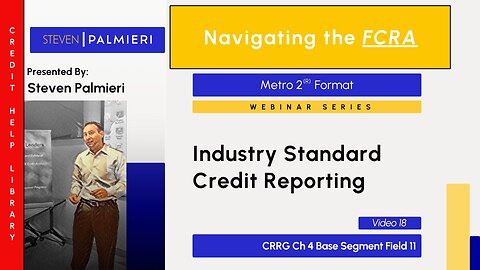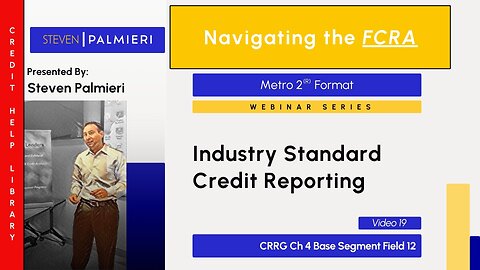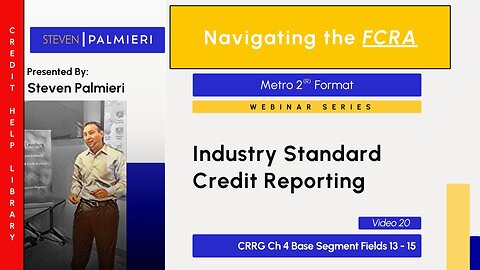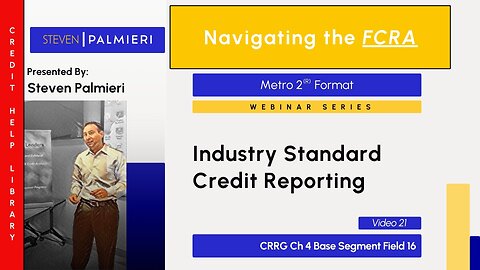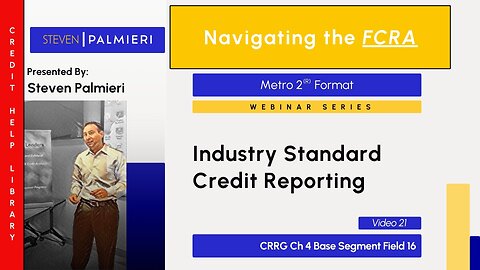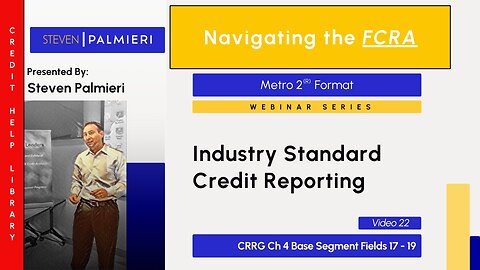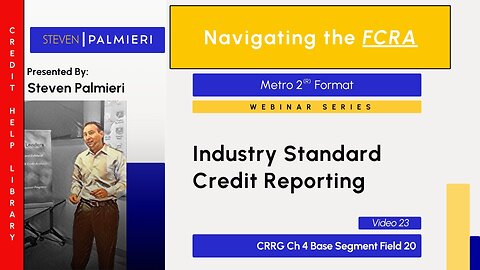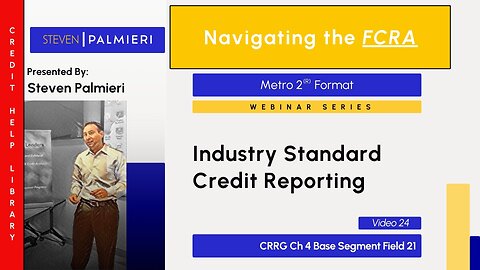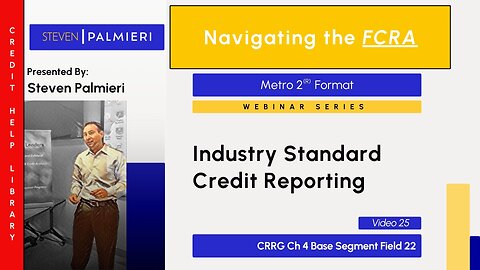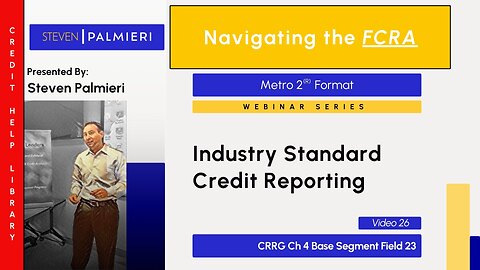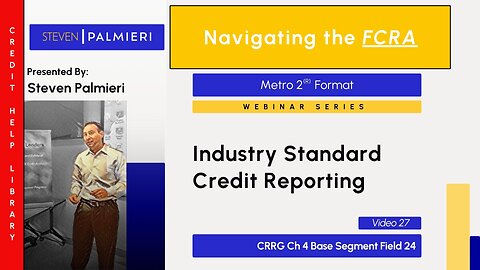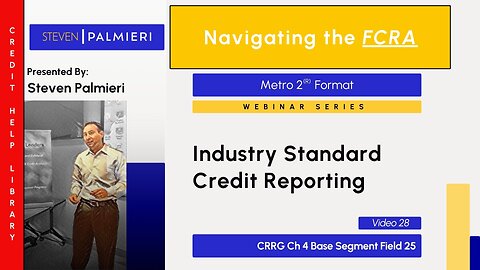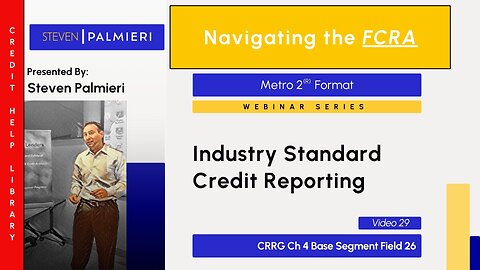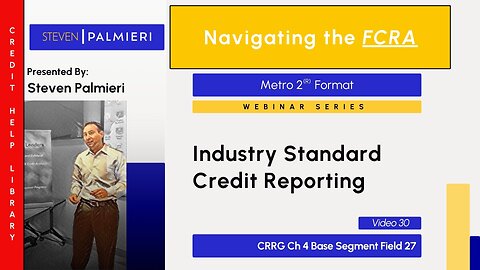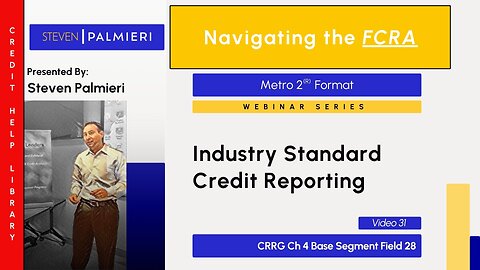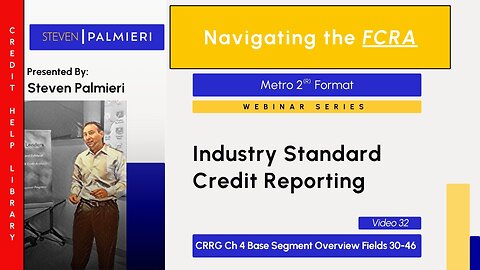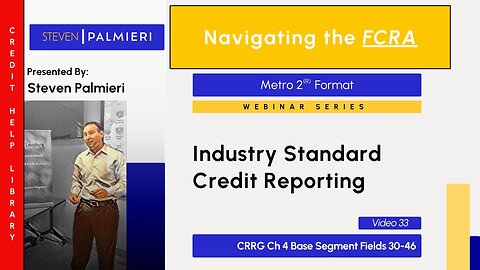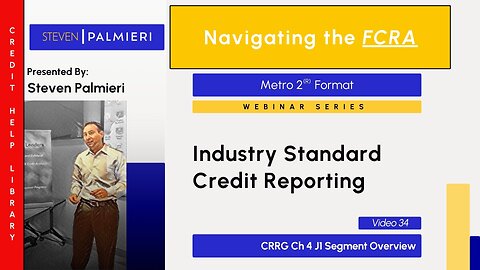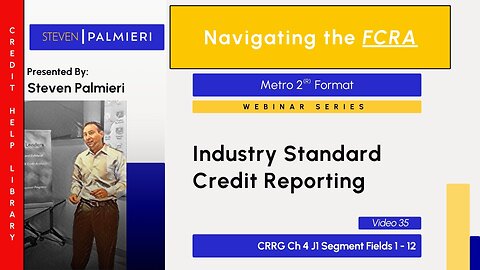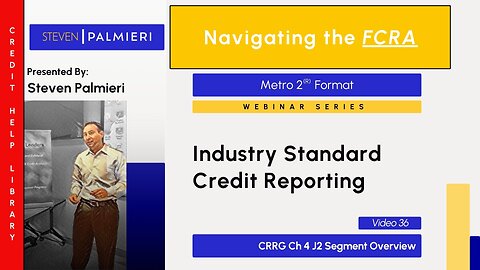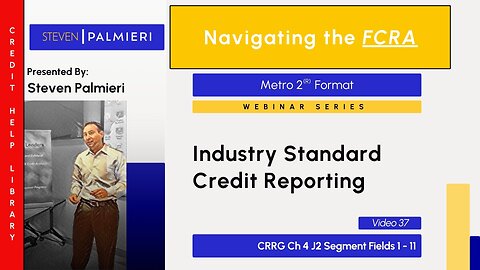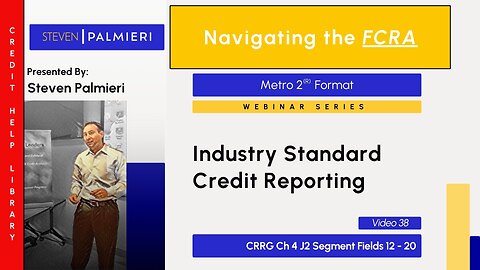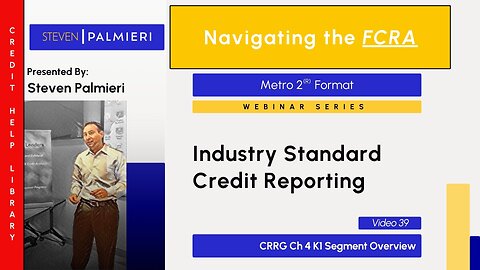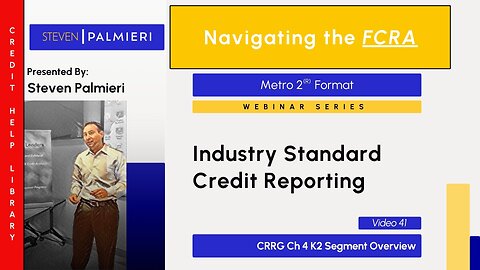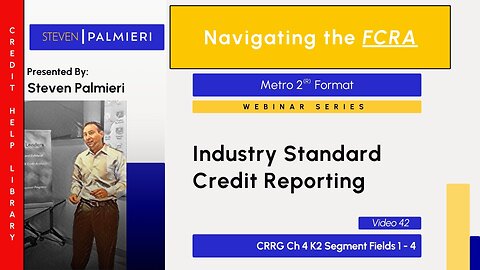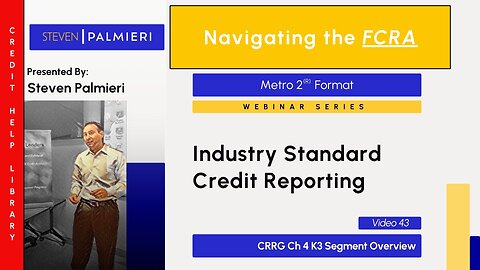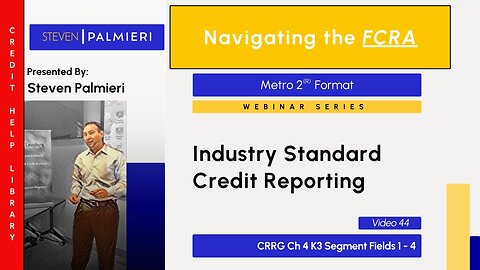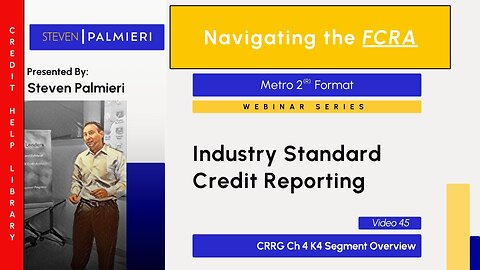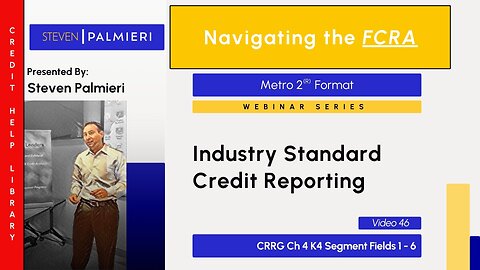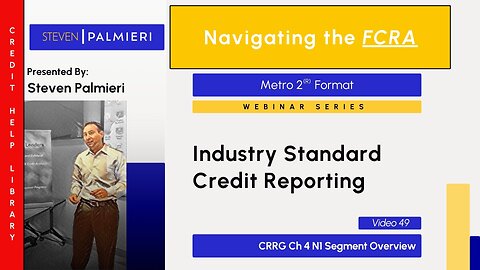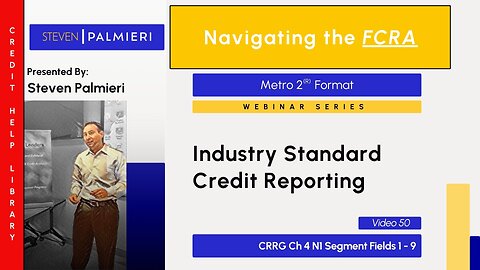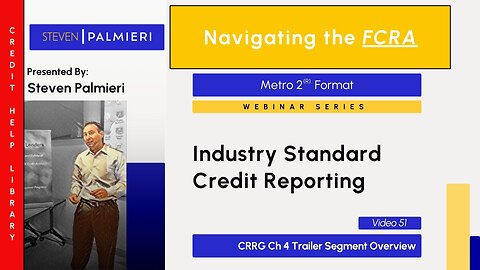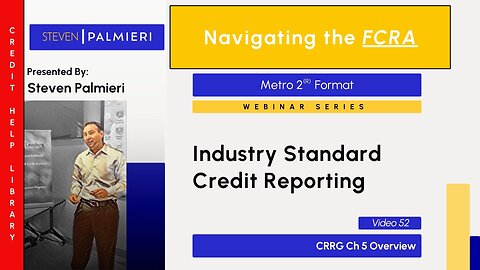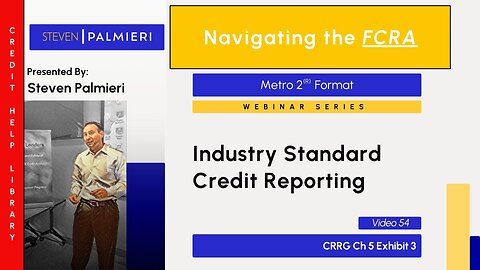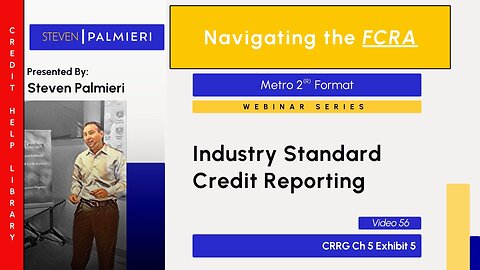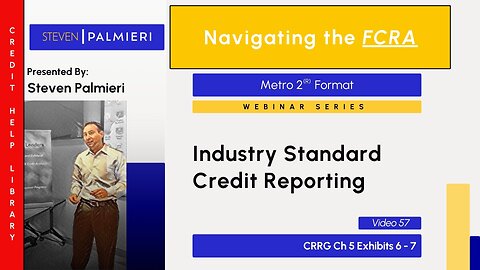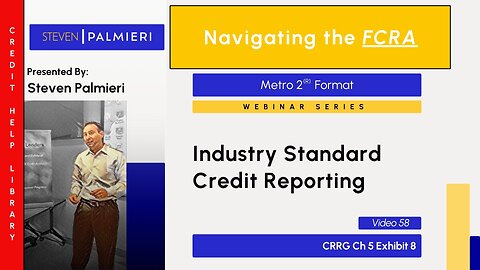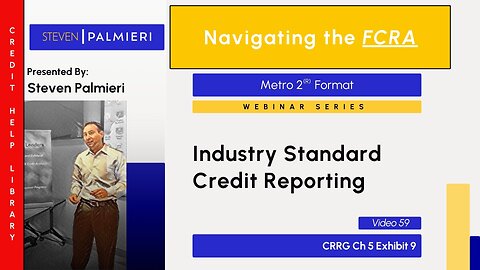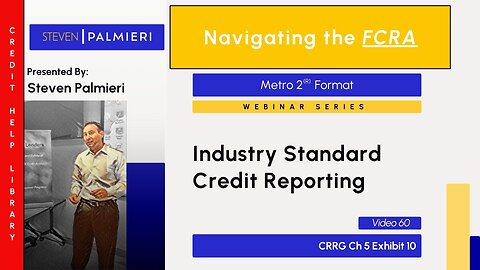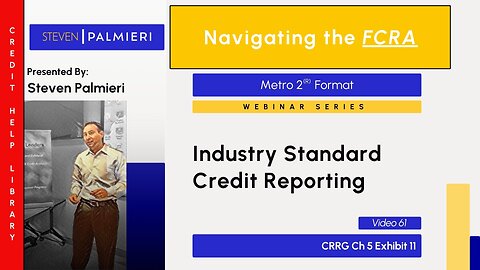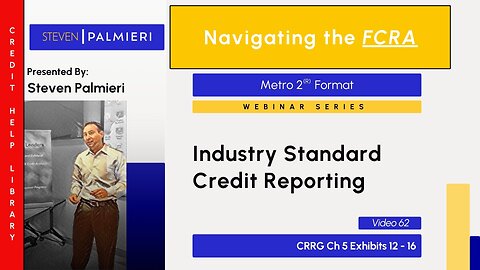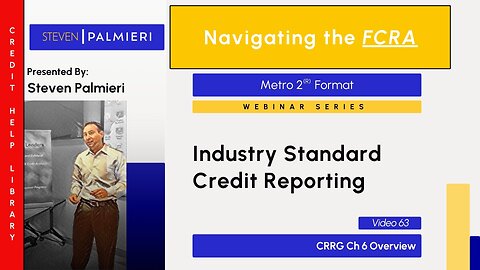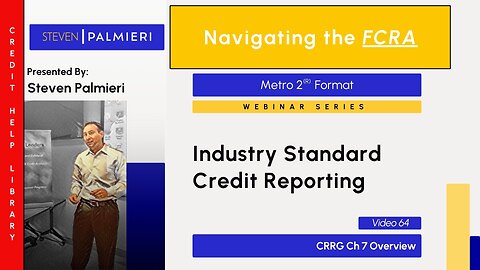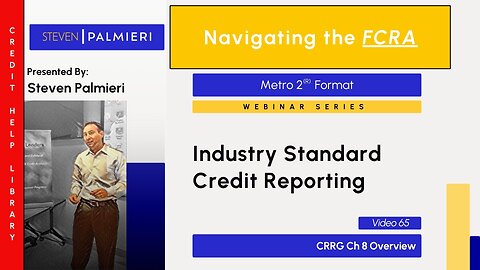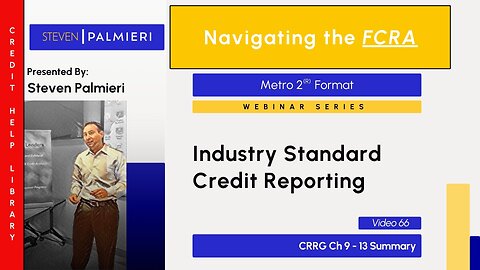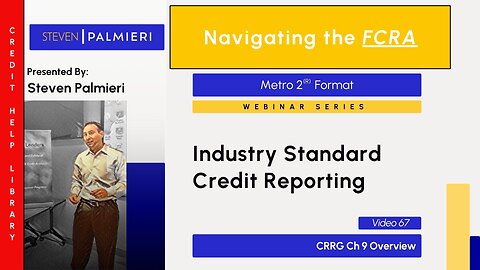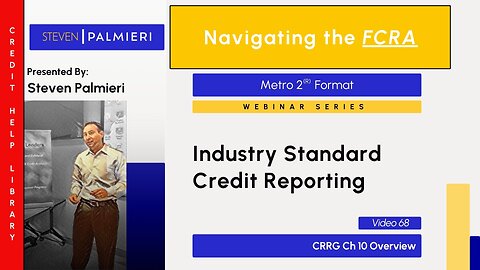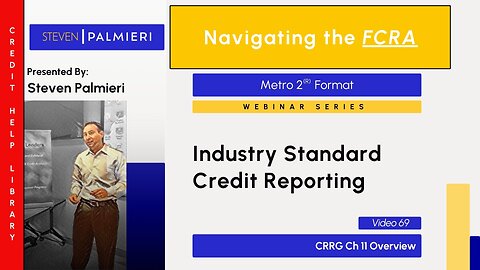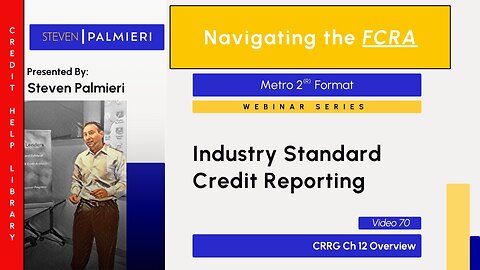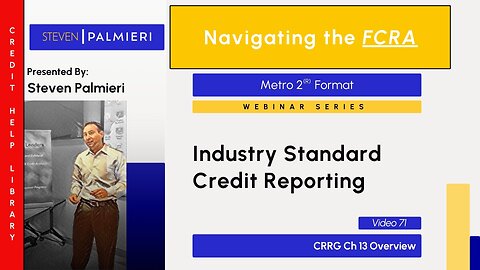Premium Only Content
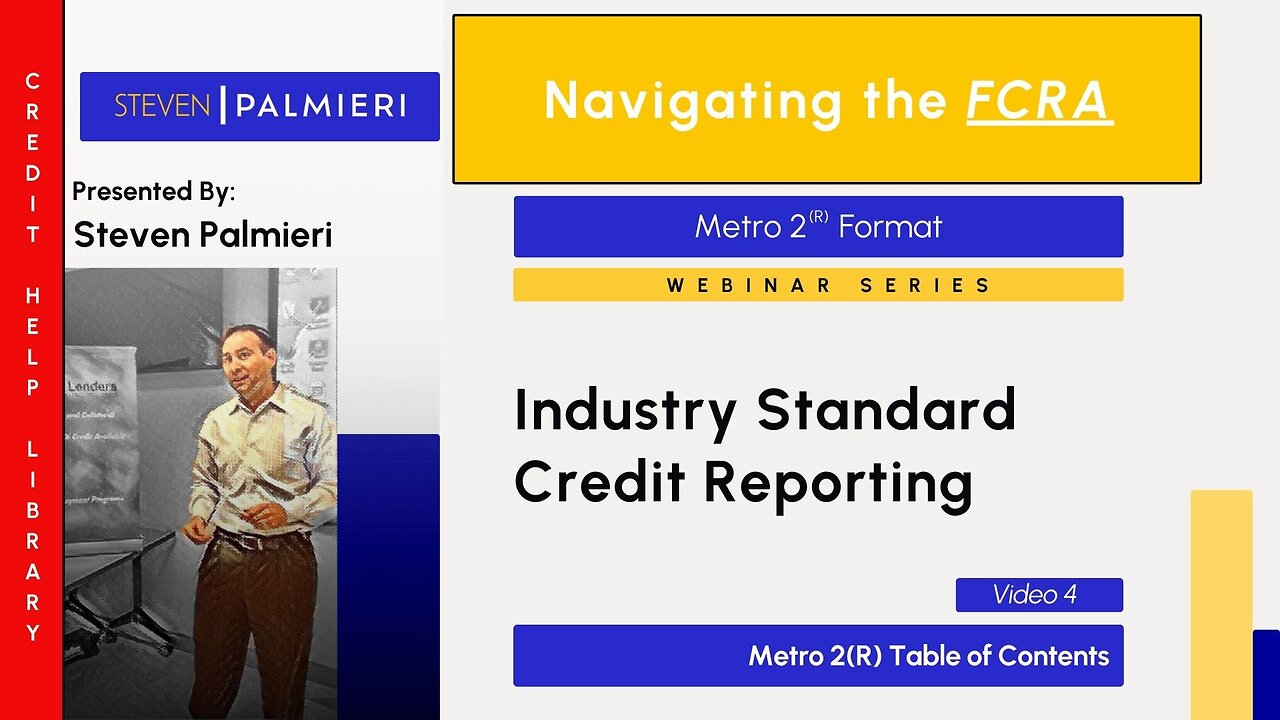
What is an Industry Standard
Reasonableness for Accuracy
Reasonableness for Dispute Procedures
Metro 2 Table of Contents
Ch 1 Overview
Ch 2 Overview
Ch 3 Overview
Ch 4 Overview
Ch 4 Segment Overview
Ch 4 Header Record Segment Overview
Ch 4 Base Segment Overview
Ch 4 Base Segment Overview Fields 0 - 6
Ch 4 Base Segment Overview Fields 7 - 29
Ch 4 Base Segment Field 7
Ch 4 Base Segment Field 8
Ch 4 Base Segment Field 9
Ch 4 Base Segment Field 10
Ch 4 Base Segment Field 11
Ch 4 Base Segment Field 12
Ch 4 Base Segment Fields 13 - 15
Ch 4 Base Segment Field 16
Ch 4 Base Segment Field 16
Ch 4 Base Segment Fields 17 - 19
Ch 4 Base Segment Field 20
Ch 4 Base Segment Field 21
Ch 4 Base Segment Field 22
Ch 4 Base Segment Field 23
Ch 4 Base Segment Field 24
Ch 4 Base Segment Field 25
Ch 4 Base Segment Field 26
Ch 4 Base Segment Field 27
Ch 4 Base Segment Field 28
Ch 4 Base Segment Overview 30 - 46
Ch 4 Base Segment Fields 30 - 46
Ch 4 J1 Segment Overview
Ch 4 J1 Segment Fields 1 - 12
Ch 4 J2 Segment Overview
Ch 4 J2 Segment Fields 1 - 11
Ch 4 J2 Segment Fields 12 - 20
Ch 4 K1 Segment Overview
Ch 4 K1 Segment Fields 1 - 3
Ch 4 K2 Segment Overview
Ch 4 K2 Segment Fields 1 - 4
Ch 4 K3 Segment Overview
Ch 4 K3 Segment Fields 1 - 4
Ch 4 K4 Segment Overview
Ch 4 K4 Segment Fields 1 - 6
Ch 4 L1 Segment Overview
Ch 4 L1 Segment Fields 1 - 5
Ch 4 N1 Segment Overview
Ch 4 N1 Segment Fields 1 - 9
Ch 4 Trailer Segment Overview
Ch 5 Overview
Ch 5 Exhibit 1 - 2
Ch 5 Exhibit 3
Ch 5 Exhibit 4
Ch 5 Exhibit 5
Ch 5 Exhibits 6 - 7
Ch 5 Exhibit 8
Ch 5 Exhibit 9
Ch 5 Exhibit 10
Ch 5 Exhibit 11
Ch 5 Exhibits 12 - 16
Ch 6 Overview
Ch 7 Overview
Ch 8 Overview
Ch 9 - 13 Summary
Ch 9 Overview
Ch 10 Overview
Ch 11 Overview
Ch 12 Overview
Ch 13 Overview
Ch 14 Overview
Metro 2 Table of Contents
The video introduces the Metro 2 industry standard, as outlined in the 2020 Credit Reporting Resource Guide (CRRG) published by the Consumer Data Industry Association (CDIA), and explains its structure to help viewers use it for accurately reading credit reports, identifying errors, and crafting dispute letters to consumer reporting agencies (CRAs). Metro 2 is critical because it aligns with the FCRA’s requirement for reasonable procedures to ensure maximum possible accuracy, providing a standardized format that credit bureaus and furnishers follow.
The CRRG’s table of contents breaks down Metro 2 into key sections. Chapter 1 outlines the roles of involved parties (e.g., CDIA, credit bureaus, furnishers, regulators like the CFPB and FTC). Chapter 2 explains the importance of Metro 2 as an industry standard for automated data reporting. Chapter 3 details the Metro 2 format, organizing data into segments like a book with chapters: the base segment (primary consumer data), J1/J2 segments (associated consumers), K1-K4 segments (creditor and payment details), L1 (account changes), N1 (employment), and header/trailer records (file transfer data). Chapter 4 provides field definitions, listing how each segment’s data fields should be reported, which is essential for spotting inconsistencies across reports from different bureaus. Chapter 5 offers exhibits with valid data options, Chapter 6 addresses FAQs (e.g., reporting repossessions or charge-offs), and Chapter 7 is a glossary. Chapters 8-13 cover implementation checklists and specific guidelines (e.g., child support, student loans, mortgages), while Chapter 14 details the E-OSCAR dispute system.
For readers, Metro 2’s structure—especially Chapters 3 and 4—enables a precise analysis of credit report data against the standard. By comparing reported fields (e.g., payment history, creditor info) to Metro 2 specifications, users can identify errors and reference these discrepancies in dispute letters, leveraging the bureaus’ own standard to demand corrections. The FAQ and examples in later chapters further clarify complex scenarios, enhancing dispute effectiveness.
-
 LIVE
LIVE
SLS - Street League Skateboarding
18 days agoSLS Paris 2025 🛹 | OCTOBER 11, 2025
13,282 watching -
 LIVE
LIVE
LFA TV
10 hours agoTHE RUMBLE RUNDOWN LIVE @9AM EST
2,759 watching -
 UPCOMING
UPCOMING
Wendy Bell Radio
4 hours agoPet Talk With The Pet Doc
1.49K5 -
 8:47
8:47
Demons Row
2 days agoI Spent $50,000 Building My Dream Harley-Davidson 😳💀 (Learn From My Mistakes)
741 -
 38:18
38:18
SouthernbelleReacts
18 hours agoThey Thought the Secret Was Buried… But I’m Screaming! | Reaction to I Know What You Did Last Summer
29 -
 29:37
29:37
Midwest Crime
1 day ago5 Cops Shot as Minnesota Raid Turns into Chaos
32.6K108 -
 31:08
31:08
mizery
17 days agoI Asked 100 Pros To Help Me Go Pro...
13 -
 LIVE
LIVE
FyrBorne
12 hours ago🔴Battlefield 6 Live M&K Gameplay: A Return to Form for This Former Giant
284 watching -
 3:40
3:40
Danny Rayes
2 days agoInfluencers Are Going Broke. What Happened?
12 -
 11:08
11:08
It’s the Final Round
15 hours ago $2.30 earned💰NFL Week 6 Best Bets🔥Player Prop Picks, Parlays, Predictions FREE Today October 12th
11.3K4

